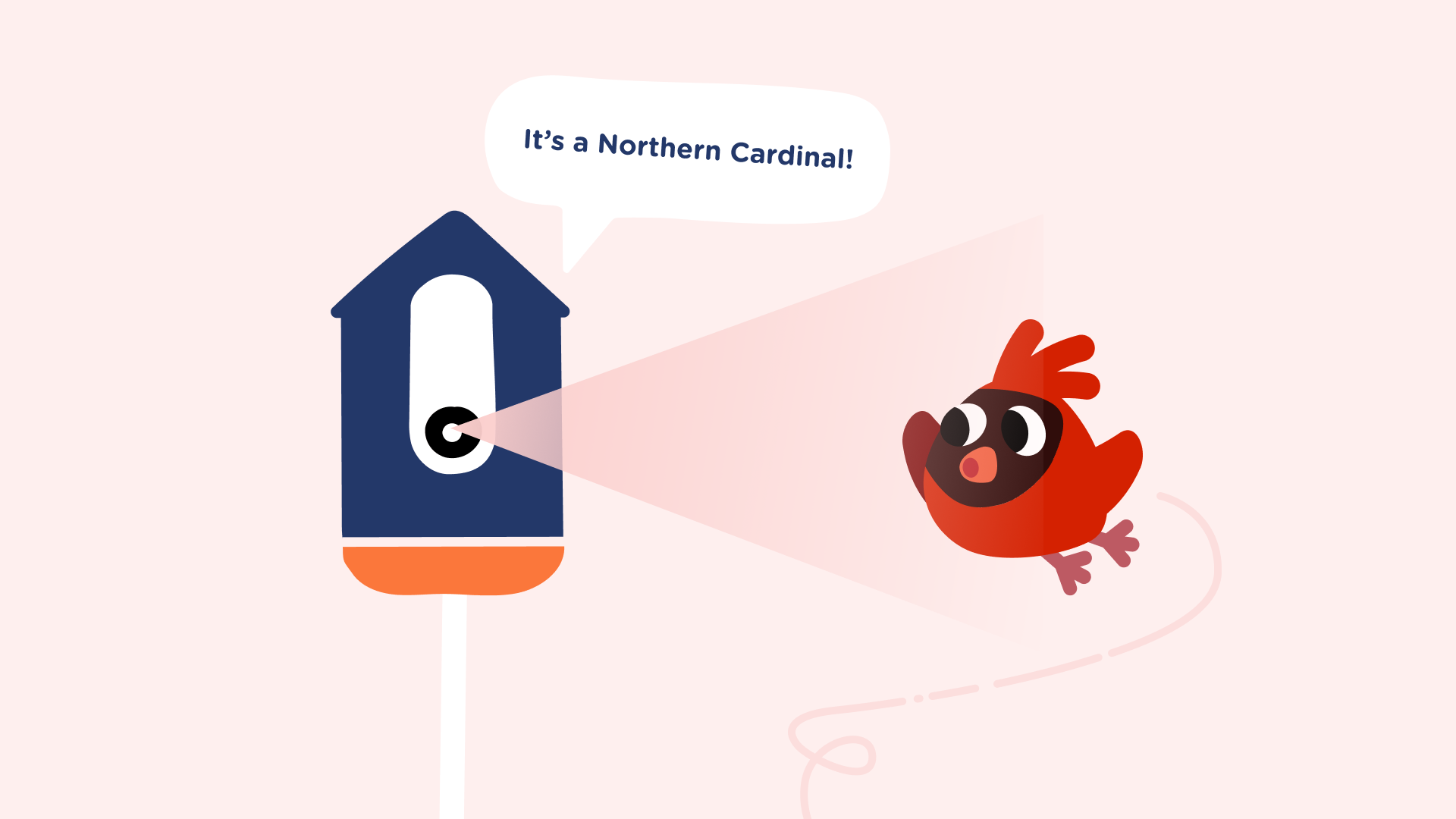In the bird identification business, training a machine learning model helps improve its accuracy – like, a lot. Later, with the data coming in from the Bird Buddy community, we will be able to create a model that even the best and brightest ornithologists would struggle to compete with.
Open Wide: What to Feed Your Machine Learning
Training a machine learning model with images is, of course, more than just chucking a million images into the program and seeing what comes out at the other end. There must first be a process of classification to ensure the best result.
First, images have to be classified into two categories: “interesting” or “not interesting”. Simple, right? Well, interesting being a highly subjective category, we ultimately came to define it as images in which a bird is in the frame and in focus, and in which at least one eye and the beak are visible. The most optimal types of images are the kind the machine learning would be coming into contact with, so images taken with a feeder cam. Enter: our machine learning test camera network. We reached out to members of the Bird Buddy community from all over the world and sent out a total of 100 test cameras, and the photos started rolling in. We received over 1.5 million images of around 130 different species. After the initial classification was complete, 300,000 “interesting” images remained – what is awesome about this is that images that humans find interesting, are also images on which the machine learning has the easiest time identifying the species! We are not so different after all…
Tech can only take you so far, though, and the rest of the legwork needs to be done by our in-house ornithologists; they go through all the images and classify it according to the species the bird captured on it belongs to. These are then fed into a model; a few classified images are left out and used to test how well the model has learnt to recognize different species. The math here is simple: the higher the variety of the images, the better and more accurate the model.

But why?
Sure, that is all well and good, but why does Bird Buddy need to go through the ordeal of creating and training a machine learning model? The Bird Buddy experience, of course, is centered on the app being able to successfully tell you which bird is currently hanging out at your feeder. It won’t stop at that, but will also help users learn interesting facts about their visitors, all in a fun and engaging way that aims to spread knowledge, enthusiasm and love of birds.
Which, in turn, leads to the second reason for the importance of such a model. Once Bird Buddies begin shipping and arrive at their new forever homes in the most diverse of locations that are home to wide varieties of birds, users who choose to volunteer their approximate location will be able to inform us on which birds stop by their feeders and how often, as well as what their favorite foods are, when they first appear and when they depart on their winter migration. All this will be invaluable for ornithologists and conservationists. Compounded, this information will allow them to deduce if certain species have started behaving unusually or fallen ill, and quickly notify users to either remove their feeders, or advise them on how to most effectively disinfect them. Working together, we will thus be able to help preserve the beauty and variety of our natural world’s bird populations.
Mixing and Matching: Science Edition
To create Bird Buddy, a number of different scientific fields had to come together. First, there are the mechanics of building, mass producing and distributing a smart hardware product that does what it says on the box, while keeping both its human buyers and bird users satisfied. Then comes the task of connecting the hardware to the specially-designed software that has its own set of roles to play; namely being educational, useful and fun all at once.
These two aspects seemingly pale in comparison to the Herculean task of designing and training the neural networks in charge of identifying the birds that visit the feeder. Then there are the contributions of the team’s vast and precious ornithological knowledge, the skills offered by the design team, as well as the UX and UI designers… When you combine all of that, what you get is just a whole lot of dedication and motivation to bring this project to fruition, and that is truly the driving force behind this whole operation.
Sounds Fun! Can I Help?
We are so glad you asked. Yes! You can either upload your photos and send us a link to your photo collection or send us an email and we will go from there.
We welcome any and all submissions; the more images we have, the better the product we will be able to make and, most importantly, the greater the number of people we will be able to help connect with and fall in love with both the natural world and our feathered friends. You will also be helping birds themselves by helping us teach people about them, and helping experts better understand and track their behavioral patterns.

What's Next?
As they say, the sky's the limit! Bird Buddy will never stop improving and learning, so it will eventually reach a point where it will be able to deal with even the most challenging (or blurriest) conditions, and identify almost every species of bird, every single time. But there is still some way to go before that happens, and we cannot wait for the journey that is proving to be just as exciting as the final destination.
















